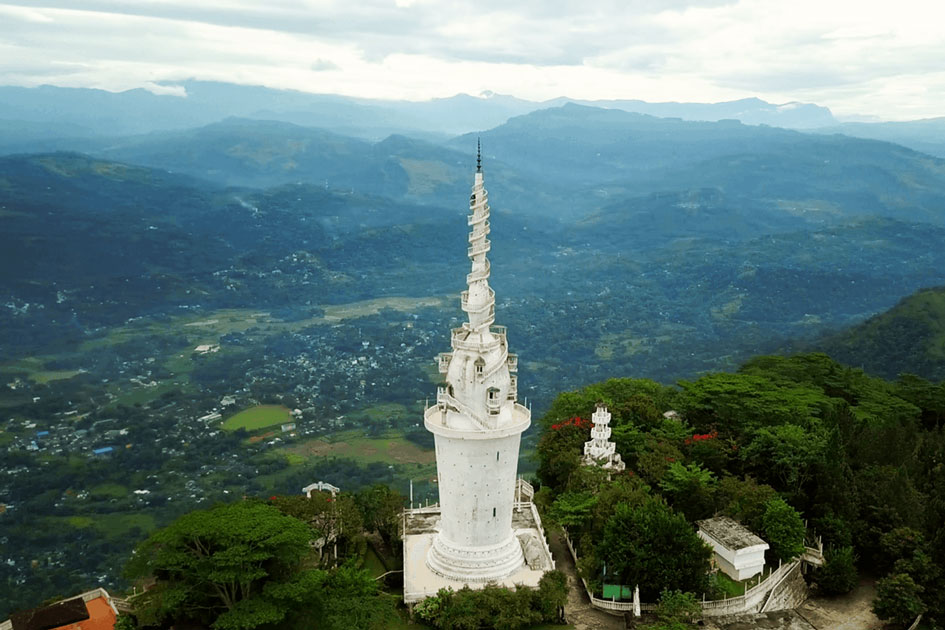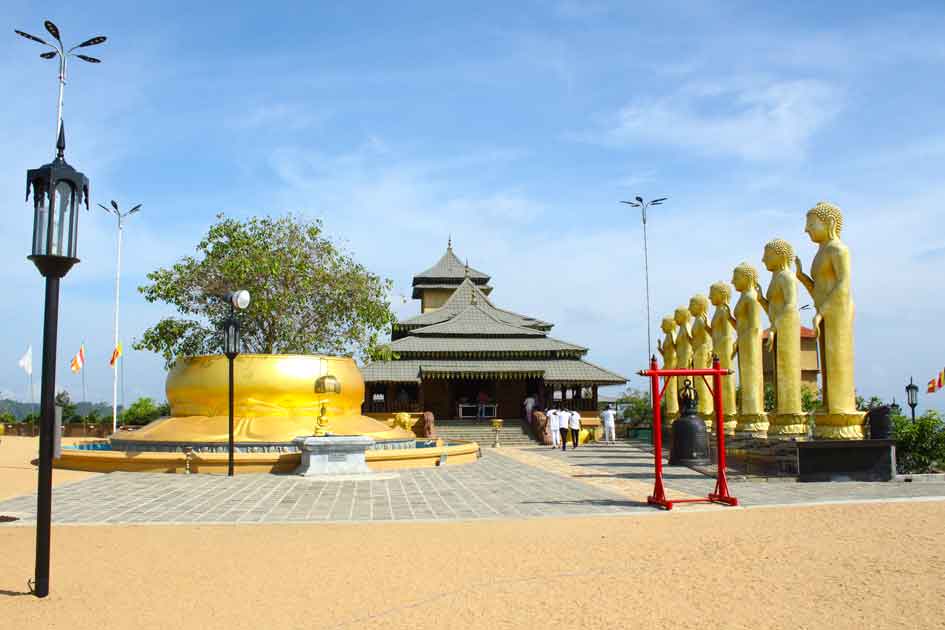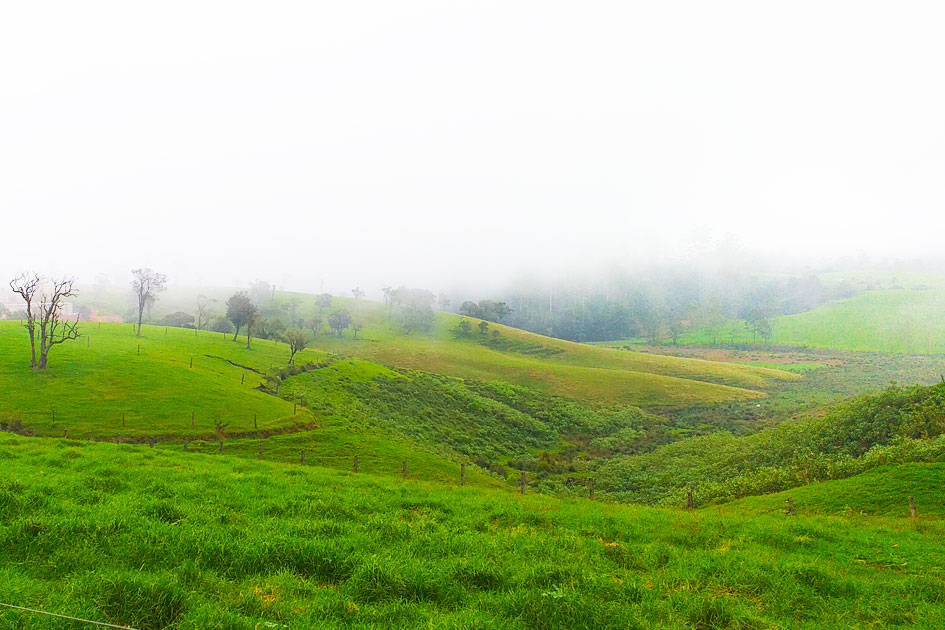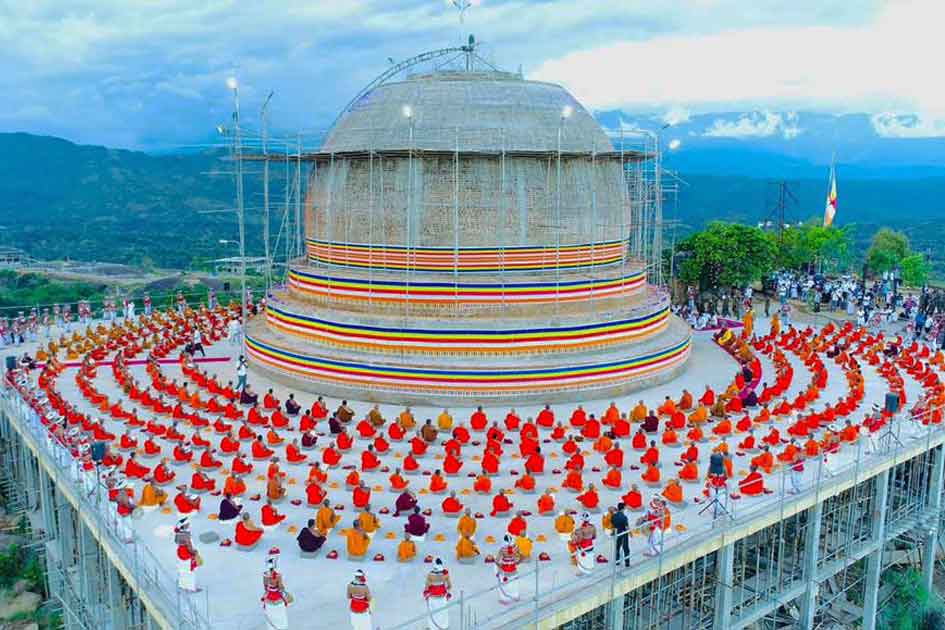Sinharaja Forest Reserve
Sinharaja Forest Reserve is a forest reserve in Sri Lanka that is also a biodiversity hotspot. It has international significance and has been designated by UNESCO as a Biosphere Reserve and World Heritage Site.
Sinharaja is the country's last viable area of primary tropical rainforest, according to the International Union for Conservation of Nature (IUCN). About 60% of the trees are endemic, and many of them are considered rare. There is a lot of endemic wildlife, especially birds, but the reserve also has over half of Sri Lanka's endemic mammals and butterflies, as well as a variety of insects, reptiles, and rare amphibians.
Sinharaja Forest Reserve is located in Sri Lanka's southwest lowland wet zone and contains the last extensive patch of primary lowland rainforest in the country. It consists of 6,092 ha of Forest Reserve and 2,772 ha of Proposed Forest Reserve, covering an area of 8,864 ha and ranging in altitude from 300 to 1,170 meters. This narrow swath of undulating terrain features a series of ridges and valleys connected by an intricate network of streams. This intricate network of waterways drains to the south and north of the property, into the Gin River on the south and the Kalu River on the north, via the Napola Dola, Koskulana Ganga, and Kudawa Ganga. Annual rainfall has ranged from 3614 to 5006 mm over the last 60 years, with the majority of precipitation falling during the south-west monsoon (May-July) and the north-east monsoon (September-November) (November- January).
There are 830 endemic species in Sri Lanka, with 217 trees and woody climbers found in the lowland wet zone. 139 (64 percent) of these have been recorded in the reserve, including 16 rare species. Birds have the highest level of endemism, with 19 (95 percent) of the 20 species recorded on the property being endemic to Sri Lanka. Mammalian and butterfly endemism is also greater than 50%. Several threatened, endangered, and rare species call the reserve home, including Sri Lanka's white-headed starling (Sturnus senex), endemic purple-faced langur (Presbytis senex), blue magpie (Cissa ornate), Sri Lanka wood pigeon (Columba torringtoni), ashy-headed babbler (Garrulax cinereifrons),and broad-billed roller (Sturnus senex) (Eurystomus orientalis irisi), leopard (Panthera pardus), Indian elephant (Elephas maxiumus), and green-billed Coucal (Centropus chlororrhynchus).
Criterion (ix):
Sinharaja is Sri Lanka's last relatively untouched tropical humid evergreen forest. The property's flora is a relic of Gondwanaland, and it contributes significantly to our scientific understanding of continental drift. It is also an excellent site for studying biological evolution processes. The presence of the Sinharaja basic zone, with the reserve located within the transition zone of two important Sri Lankan rock types, the south-western group, and the highland group, is an intriguing geological feature.
Criterion (x):
Endemism is abundant in the property. Sinharaja is home to at least 139 native plant species and is divided into two types of forest: Dipterocarpus remnants in valleys and on lower slopes, and secondary forest and scrub where the original forest cover has been lost. Sixteen endemic plant species on the property are considered rare, including the endemic palms Loxococcus rupicola and Atalantia rotundifolia.
Endemism in flora and fauna is also high, exceeding 50% for mammals, birds, and butterflies. The property is home to 19 (95 percent) of Sri Lanka's 20 endemic birds, as well as leopard and Indian elephant, both of which are threatened species.
Route to Sinharaja Forest Reserve
Protection
On May 3rd, 1875, the majority of the property was designated as a forest reserve, beginning a long history of protection. It was designated as a national heritage wilderness area on October 21st, 1988. The property is legally protected at the highest level under Sri Lanka's National Heritage and Wilderness Area Act, and almost all of the peripheral natural forests along the boundary have already been designated as conservation forests or reserved forests under the Forest Ordinance. The property's values were further recognized when it was designated a Biosphere Reserve in April 1978 and later inscribed on the World Heritage List.
The Sinharaja World Heritage property is managed directly by the Forest Department's Divisional Forest Officer, who reports to the Ministry of Lands and Land Development. The institutions for Sinharaja as a National Wilderness Area, Biosphere Reserve, and World Heritage site are coordinated by a National Steering Committee. Management practices and research are carried out by the prescriptions of the respective management plans, which have been prepared for the Sinharaja Conservation Area as well as the property's peripheral natural forests by national forest policy directives. Conservation, community engagement, buffer zone management, scientific testing, and benefit-sharing are all highlighted in the property's management plans, which were prepared in 1985/86 and 1992/94.
Sinharaja is legally protected to the greatest extent possible under the National Heritage Wilderness Area Act, and the local community's high level of environmental awareness is extremely beneficial in implementing management plan prescriptions. Local communities' reliance on the forest is very low, and maintaining this healthy partnership with local communities is the primary strategy for ensuring the property's future protection. The reserve has historically been protected due to its inaccessibility and steep, hilly terrain, and the Forest Department prioritizes its protection over development pressures and resource extraction. With entry by permit only, visitor numbers remain low.
Encroaching cultivation, particularly along the southern boundary, poses the greatest threat to the property's values and integrity. Outside development has an indirect impact on the site through road developments, which open up routes and entry points into the property, facilitating illegal logging and resource removal, with illegal gem mining also posing a threat. Traditional uses of forest products are now restricted to areas beyond the boundaries.
Low staffing levels impede crime policing, and a lack of funding impedes effective, long-term management of the area. The management agency, the Sri Lankan Forestry Department, has made Sinharaja management a top priority, allocating funds based on the priorities outlined in the management plan and ongoing management programs.






